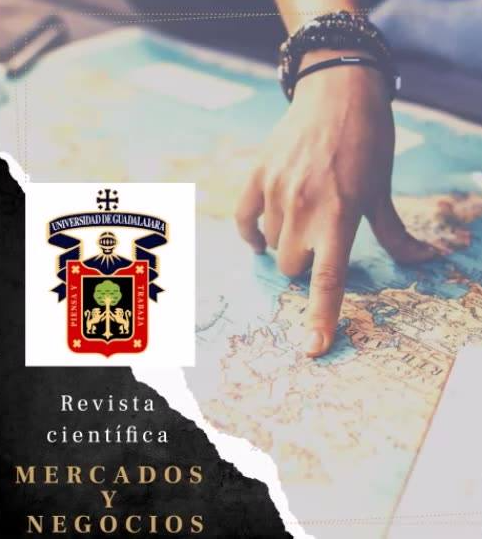A model of negotiation scenarios based on time, relevance andcontrol used to define advantageous positions in a negotiation
DOI:
https://doi.org/10.32870/myn.v0i32.5401Palabras clave:
negotiation, strategyResumen
Models that apply to negotiation are based on different perspectives that range from the relationship between the actors, game theory or the steps in a procedure. This research proposes a model of negotiation scenarios that considers three factors (time, relevance and control), which are displayed as the most important in a negotiation. These factors interact with each other and create different scenarios for each of the actors involved in a negotiation. The proposed model not only facilitates the creation of a negotiation strategy but also an ideal choice of effective tactics.Citas
Adair, W.L., & Brett, J. M. (2005, Jan-Feb). “The Negotiation Dance: Time, Culture, and Behavioral Sequences in Negotiation”, Organization Science,16(1): 33-51
Bazerman, M. H. , & Neale, M. A. (1992). Negotiating Rationally. New York, ny: Free Press
Bhatia, A. (2012). Value Creation - Linking Information Technology and Business Strategy. Texas: Brown Books Publishing
Chamberlin, E. H. (1937). “Monopolistic or Imperfect Competition?”, The Quarterly Journal of Economics, pp 557-580
Cohen, P., Greenberg, M., Hart, D., & Howe, A. (1989). “Trial by Fire: Understanding the Design Requirements for Agents in Complex Environments”, AI Magazine, 10(3): 34-48
Cournot, A. (1838). Researches into the Mathematical Principles of the Theory of Wealth. (N T Bacon, Trad ) New York: Macmillan
Edgeworth, F. Y. (1925). “Papers Relating to Political Economy”, in Edgeworth, F. Y., Papers Relating to Political Economy (pp 111-142) London: Macmillan
Farmer, A., & Pecorino, P. (2010, October). “Pretrial Bargaining with Asymmetric Information: Unilateral versus Bilateral Payoff Relevance”, Southern Economic Journal, 77(2): 369-384
Fells, R. (2013). “Negotiation Success-An Application of the Halpert et al Path Model”, Negotiation and Conflict Management Research, 6(2): 133-150
Fisher, R., & Ury, W. (1981). Getting to Yes, Negotiation Agreement Without GivingIn. New York, ny: Penguin Books
French, J., Jr. , & Raven, B. (1959). “The bases of social power”, in Cartwright, D , Studies in social power (pp 150-167) Ann Arbor: University of Michigan Press
Garcia, S. (2002, Sept ) “Power and the Illusion of Transparency in Negotiations”, Journal of Business and Psychology, 17(1): 133-144
Golden, J. (2008, July) “The Negotiation Counsel Model”, Negotiation Journal, pp 371-378
Grump, L. (2007, April). “A Temporal Model of Negotiation Linkage Dynamics”, Negotiation Journal, pp 117-153
Kersten, G, Michalowski, W, Szpakowicz, S, & Koperczak, Z (1991) “Restructurable Representations of Negotiations”, Management Science, 37(10): 1269-1290
Lawson, M. B. (2001, Aug ). “In Praise of Slack: Time is of the Essence”, The Academy of Management Executive (1993-2005), 15(3): 125-135
Lax, D. A., & Sebenius, J. K. (1986). The Manager as Negotiatior. New York: The Free Press
Lynch Jr., J.G. , & Zauberman, G. (2006, Spring) “When do You Want It? Time, Decisions, and Public Policy”, Journal of Public Policy & Marketing, 25(1): 67-78
Qian, Y. (1994, July) “Incentives and Loss of Control in an Optimal Hierarchy”, The Review of Economic Studies, 61(3): 527-544
Raiffa, H. (1982). The Art and Science of Negotiation. Cambridge, ma: Harvard University Press
Raiffa, H. , Richardson, J. , & Metcalfe, D. (2002) Negotiation Analysis. Cambridge, ma: The Belknap Press of Harvard University Press
Sayman, S., & Önçüler, A. (2009, Mar ). “An Investigation of Time Inconsistency”, Management Science, 55(3): 470-482
Sebenius, J. K. (1992, Jan ) “Negotiation Analysis: A Characterization and Review”, Management Science, 38(1): 18-38
Seshadri, S., & Shapira, Z. (2001, May). “Managerial Allocation of Time and Effort: The Effects of Interruptions”, Management Science, 47(5): 647-662
Wheeler, M., & Morris, G. (2002, Jun ). “Complexity Theory and Negotiation”, Harvard Business School Publishing, pp 1-15
Publicado
Cómo citar
Número
Sección
Licencia
Mercados y Negocios por Departamento Mercadotecnia y Negocios Internacionales. Universidad de Guadalajara se distribuye bajo una Licencia Creative Commons Atribución-NoComercial 4.0 Internacional.
Basada en una obra en http://revistascientificas.udg.mx/index.php/MYN/.
Los autores conservan los derechos de autor.








